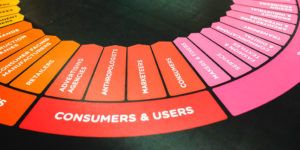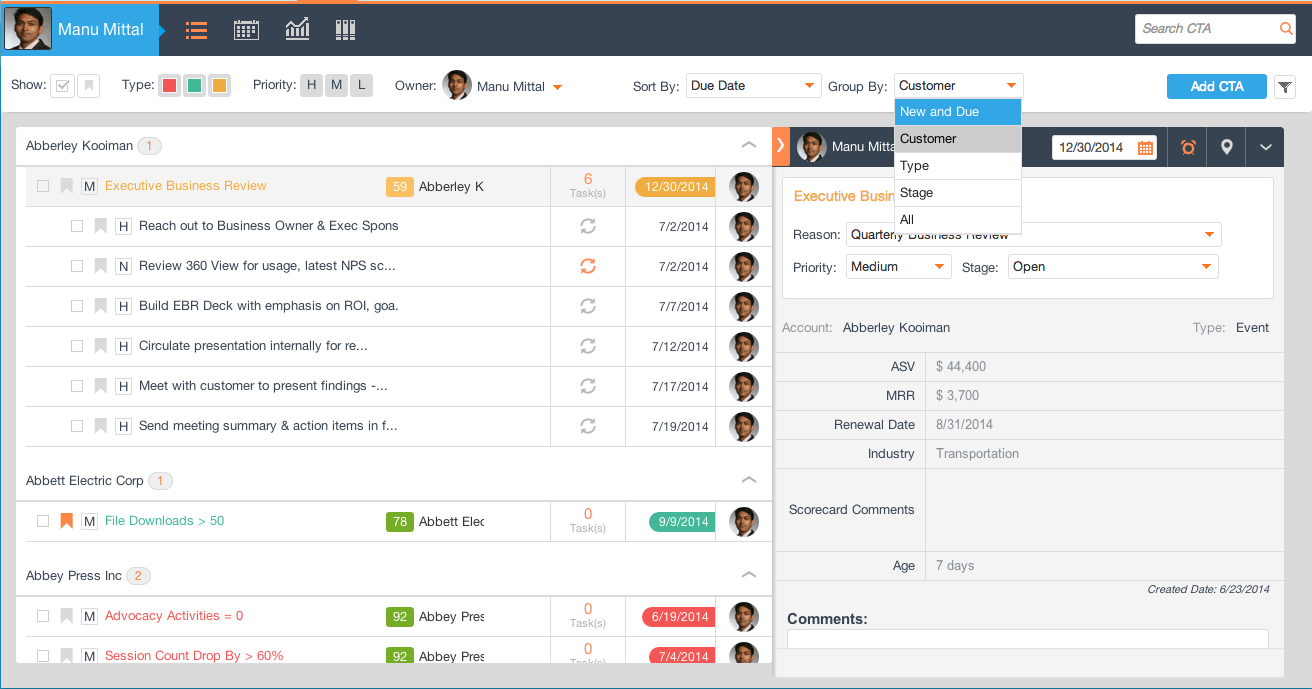
When you only have a few customers, keeping them organized is easy. You can be acutely aware of their specific needs. You can react quickly to any of their problems. You even have the number of your contact at that organization in your phone.
But what happens when your customer list grows? Even just 20 or 30 customers (the threshold is different for each SaaS company) can make it challenging for a customer success manager (CSM) to understand the problems and needs of every customer, let alone create a positive experience for everyone.
To manage customers at scale, you need customer segmentation
Customer segmentation is the practice of dividing your customer list into groups based on certain characteristics. You can be as broad or as specific as you prefer.
You may segment customers by size, industry, how they use your application, revenue, or countless other variables. The stage of your company is important as well. You might change your segmenting as your organization and customer makeup grow.
Over time, the data you collect will help you create deeper segments. Eventually you’ll be able to pull up a detailed list; for example, a list of every customer in healthcare with at least 50 employees that does $15 million/year in revenue and logs into your app every day.
The goal of customer segmentation is two-fold:
1. Identify and prioritize accounts
Not all customers are equal. That may be harsh, but it’s true. You can’t (and shouldn’t) give equal resources to each account. Some require more of your time than others. Some offer more value to your organization than others. You need to identify the ones that would benefit from more resources.
2. Determine strategies to help your customers achieve success
Like I said, not all customers are equal. They certainly aren’t all the same. With segmentation, you can tailor your service and messaging to each group. Don’t offer help staying compliant with healthcare regulations to non-healthcare companies. Don’t waste your time trying to expand the service of a customer who absolutely can’t afford it. By segmenting, you’ll know where to point your effort.
How to create customer segments

CSMs should develop customer segments because of their unique post-sale interactions with customers. They’re the only ones who handle the type of information necessary to properly categorize your customer base (although marketing and sales should have input).
CSMs should develop customer segments because of their unique post-sale interactions with customers.
Once created, the segmentation standard should be distributed to the rest of the organization, but don’t expect other teams to use your groups exactly. Marketing, sales and product have different internal goals, so they’ll use their own segmenting standards.
Step 1: Start with demographics
Basic demographic information is easy to collect, and it’s important. Grab every variable that could ever be relevant, like company size, revenue, number of employees, industry, legal structure, etc.
This data is rarely actionable on its own, but it’s useful to qualify other data. You’ll probably never want to see a list of all customers who are located in Arizona, but you may need a list of financial companies in Arizona so you can notify them about compliance changes.
This information is easy to collect for low-touch SaaS organizations. You either ask the customer for it or do some quick investigating. High-touch products have to get creative in order to gather this data. They might give out content that’s gated by forms or poke users to flesh out in-app profiles.
Step 2: Evaluate your customers’ needs
This should go without saying for CSMs, but I’m going to say it in the context of customer segments.
What are your customers’ needs? Their goals? Their plans for the future? Drill deep here -- every organization has deeper needs than “more sales.” Use these needs to create segments. For instance, you might create groups like these:
- Group A: Customers who are looking to grow the value of their accounts.
- Group B: Customers who want to automate their internal processes.
- Group C: Customers who want to reduce their purchasing costs.
Those needs are specific and actionable. CSMs can create goals for their quarterly business reviews with action steps to help the customer achieve those goals.
Step 3: Decide which segments are most important to you
Look at your segments and decide which one offers the most value to your organization. Ask yourself questions like this:
- Is any segment more likely to renew and expand their account?
- Does any segment have a higher potential or likeness to expand?
- Does any segment move through the sales cycle faster?
- Does any segment provide more product feedback
- Does any segment refer more business?
- Is any segment less expensive to manage?
- Is any segment difficult or costly to serve?
Naturally, you’ll focus resources into accounts that offer the largest benefit for your own organization.
To identify customers that provide the largest benefit, you must determine what benefit means for your organization. What is your ideal customer like? List their characteristics, down to the smallest detail. Surely this customer isn’t perfect, so make a note of what you would change if you could to make them a better customer.
As your customer success team and organization grows, it might be useful to formulate a quality score that weighs your variables for well-fit customers. This is a simple point-based representation of the idealness of each customer.
For example, you might give a customer 1 point if they’re in telecommunications, but 3 points if they’re in retail. You might award 20 points if their lifetime value crosses a certain threshold, or subtract 10 points if the account is predicted to cost a percentage/dollar over the average. This algorithmic method is a useful way to score a large number of customers to help you scale.
Step 4: Segment by lifecycle stage
It’s smart to segment customers by their stage in your SaaS’ lifecycle. Identify customers who are 90, 60, and 30 days from renewal. Segment customers that are still in the onboarding phase, the “honeymoon” (post-sale) phase, or the not-new-but-we’re-still-watching phase.
Segmenting by likelihood of upselling is important, too. You might have to use your other segments as conditions (or qualifiers) for this one, unless your customers all inhabit the same narrow niche. For instance, you might put all of your retail bank customers that have been with you for a year in an upsell segment, but your regional banks enter that segment within six months.
Managing your customer segments
I don’t recommend trying to manage your customer segments by hand. Over time, your segmenting should become more complex as your organization grows, you learn more about your customer, and you define your customer success team’s purpose.
You need a customer success tool for this. There’s really no avoiding it. A quality tool will help you manage your data and add/move customers between groups. It should also integrate with your application so you can set up triggers that automatically manage segments, as well as your email marketing tool so you can send messaging based on those segments.
Here’s a screenshot from Gainsight that shows some segment options on the right.

Here’s my go-to list of recommended tools. (I’m not affiliated with any of these.)
Review your segmentation regularly
There’s no such thing as too much information. You should always be collecting data (whether through your analytical tools or through customer interactions) to improve the performance of your customer success team.
Schedule a regular time (at least quarterly) to review your segmentation structure. Does it make sense? Does it still fit? Has your product changed in any way that might adjust how you segment customers and/or prioritize those segments?
Segmentation doesn’t help anyone unless it’s used to add business value. That is, it should lead you to some sort of action. If you choose to prioritize customers with high chances to expand their accounts, did those expansions happen? Are insurance companies the right customers to focus on, or did they routinely frustrate you? Did giving extra attention to potential referral accounts actually cause more referrals?
Most importantly, remember that as a customer success manager (or someone setting up a customer success program in your organization), your job is to serve customers. Segmentation puts customers into groups so you can provide the right solutions to the right people.
